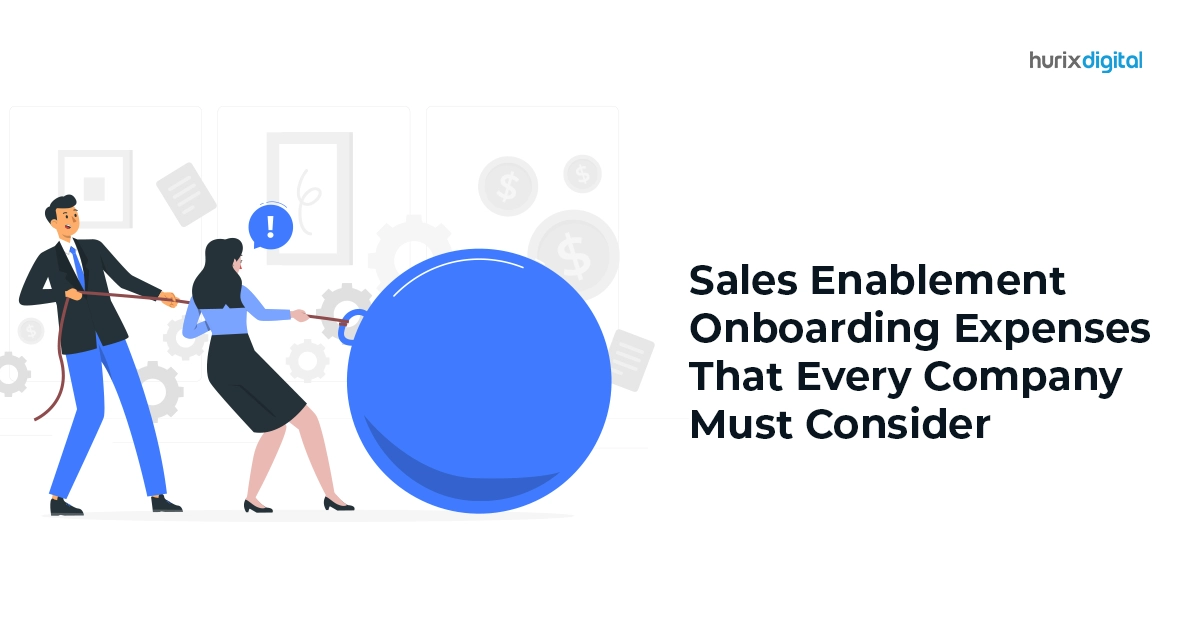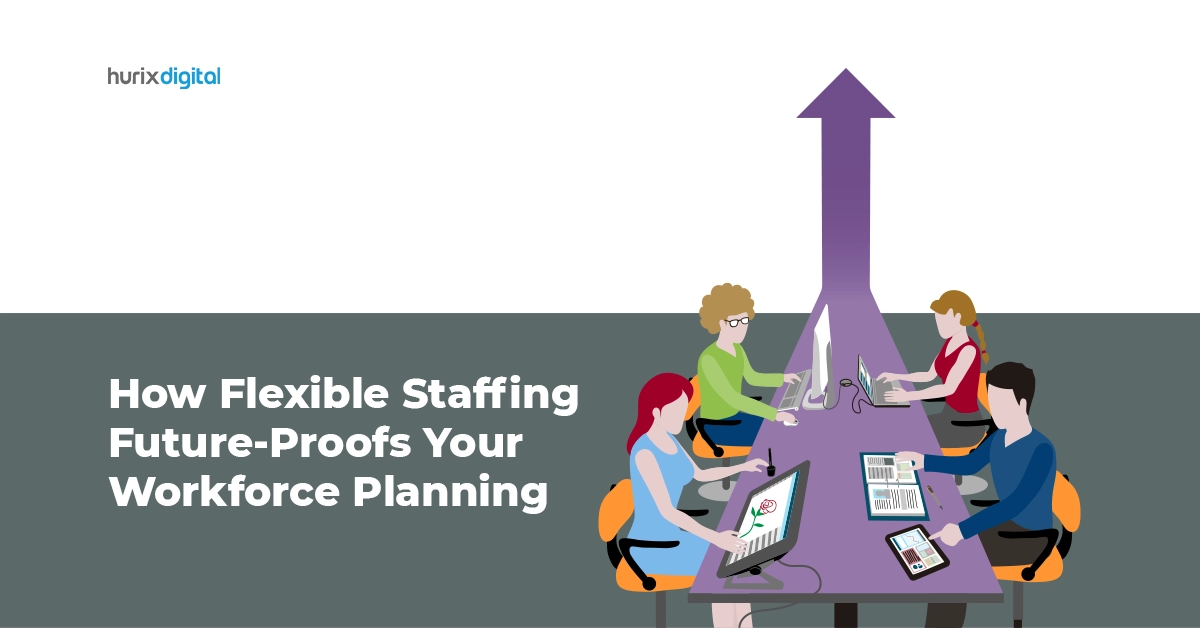
Sales Enablement Onboarding Expenses That Every Company Must Consider
Summary
This post details the onboarding expenses related to sales enablement. Gain insights into budgeting for effective sales training and its impact on company success.
Onboarding new sales reps is a crucial yet costly endeavor. But beyond the initial hiring and training fees lies a hidden gem: sales enablement onboarding. This often-overlooked segment plays a vital role in equipping reps with the knowledge, skills, and resources needed to hit the ground running. However, navigating the intricate web of sales enablement onboarding expenses can be daunting.
Underestimating these expenses can lead to disorganized training, ineffective resource allocation, and, ultimately, lower revenue.
Read on as we explore the imperative realm of onboarding for new sales representatives in this post.
Table of Contents:
- Understanding the Landscape: Key Cost Drivers
- The Cost Equation: Breaking Down the Numbers
- Onboarding ROI in Sales: Measurable Value Beyond the Costs
- Building a Budget-Savvy Onboarding Strategy
- Conclusion
Understanding the Landscape: Key Cost Drivers
Navigating the financial terrain of sales onboarding investments can be tricky. It’s like trekking through a diverse landscape, where each step reveals new cost considerations. Sales enablement onboarding isn’t a one-size-fits-all endeavor.
Below are the key cost drivers that organizations commonly encounter when investing in sales onboarding:
1. Company Size and Industry
Large enterprises with complex sales processes typically incur higher costs compared to smaller startups.
The financial services industry, for instance, often requires extensive compliance training and regulatory knowledge, impacting onboarding costs. Healthcare, on the other hand, might prioritize product-specific training and patient interaction skills.
2. Sales Methodology and Tools
Implementing sophisticated methodologies like MEDDIC or implementing advanced CRM software can elevate costs. Sales enablement technology platforms, CRM software, and content creation tools can significantly enhance onboarding effectiveness.
However, choosing the right tools and managing their subscriptions strategically is crucial to avoid budget bloat. So, make sure to carefully assess your organization’s specific needs and select tools that align with your sales methodology and overall business strategy.
3. Onboarding Duration and Intensity
A longer, more immersive onboarding program naturally translates to more significant expenses. Individualized coaching, mentoring, and shadowing programs offer invaluable support but come with higher trainer and time commitments, impacting the budget.
Group training sessions, while potentially less expensive, might not cater to individual needs as effectively. So, finding the right balance between onboarding duration and intensity is crucial for optimizing costs and ensuring the effectiveness of the program.
4. Training Methods and Resources
The key to optimizing your sales enablement onboarding budget lies in understanding your specific needs, industry context, and available resources.
Utilizing external trainers, personalized coaching, or custom content development can increase costs compared to in-house training.
Developing custom training modules, simulations, and role-playing scenarios can be resource-intensive. Leveraging existing industry resources, online libraries, and readily available templates can significantly reduce content creation costs.
Also Read: 5 Industries That Will Drive Virtual Reality in Corporate Training
The Cost Equation: Breaking Down the Numbers
Sales enablement onboarding expenses paint a diverse picture. They encompass the following:
Direct Costs
- Salaries and benefits: Trainers, mentors, coaches, and administrative staff dedicated to onboarding.
- Technology: Licenses for sales enablement platforms, communication tools, and CRM software.
- Content development: Creating customized training materials, playbooks, and product-specific knowledge bases.
Indirect Costs
- Lost productivity: Time spent away from selling activities by both new hires and trainers.
- Travel and accommodation: Onboarding events, conferences, and travel expenses for trainees.
- Opportunity cost: Delayed ramp-up time for new hires translates to lost revenue potential.
By optimizing your budget and focusing on strategic initiatives, you can equip your new hires with the knowledge, skills, and confidence they need to become top performers and contribute to long-term success.
Quantifying the Investment
Studies reveal the stark reality of onboarding costs. Research claims companies invest an average of $1400 per new hire onboarding. However, this figure can vary greatly depending on company size, industry, and the complexity of the sales process.
Remember: Effective onboarding isn’t a one-time expense; it’s a strategic investment with long-term returns. Let’s explore this crucial concept.
Onboarding ROI in Sales: Measurable Value Beyond the Costs
The true value of sales enablement onboarding goes beyond financial figures. While quantifying the value of engagement and improved morale can be tricky, it is essential to measure the Return on Investment (ROI) to demonstrate the tangible benefits of the onboarding program.
Consider these potential returns when assessing the ROI of sales enablement onboarding:
- Increased revenue: Studies show that companies with effective onboarding programs achieve 82% higher retention.
- Reduced turnover: Effective onboarding fosters engagement and reduces new hire attrition, lowering the costs associated with replacing lost sales reps.
- Improved sales productivity: New hires equipped with the right knowledge, skills, and tools reach quota faster, boosting overall team performance.
- Enhanced customer satisfaction: Well-trained reps deliver better customer experiences, leading to higher satisfaction and loyalty.
By incorporating these insights and adopting smart budgeting practices, you can ensure your new hires are equipped to hit the ground running and become valuable assets to your sales team.
Building a Budget-Savvy Onboarding Strategy
Now, we move from understanding the costs to optimizing them. Data is your compass. We’ll show you how to measure the effectiveness of your onboarding program, identify areas for improvement, and ensure your budget delivers the best possible ROI.
Here are some key strategies to build a budget-savvy onboarding strategy:
1. Develop a Tailored Onboarding Program
Align your program with your specific sales cycle, product complexity, and target audience. Don’t waste resources on generic training that doesn’t address your unique needs.
2. Leverage Technology Wisely
Utilize cost-effective sales enablement platforms to automate repetitive tasks, personalize learning experiences, and track progress.
3. Embrace Blended Learning
Combine classroom training with online modules, self-paced learning, and mentorship programs to cater to diverse learning styles and maximize engagement.
4. Measure and Iterate
Track the effectiveness of your onboarding program consistently. Utilize metrics like time to quota, customer satisfaction scores, and sales success rates to identify areas for improvement and optimize your budget allocation.
Also Read: Trends and Innovations in Instructional Design for Workforce Learning
Conclusion
While budgeting for sales enablement onboarding is crucial, don’t overlook the human element.
Make sure you foster a supportive and welcoming culture, provide ongoing mentorship and coaching, and celebrate individual achievements. These investments, though not easily quantified, can significantly boost employee engagement, retention, and overall performance.
Don’t let onboarding expenses be a roadblock to sales success. Rather, view them as strategic investments in your team’s capability and long-term success.
At Hurix Digital, we understand the complexities of building effective and budget-savvy sales enablement programs. We offer a powerful suite of data-driven solutions, including interactive learning platforms, content creation expertise, expert consultation, and technology integration.
Contact us today for further info!

Performance, Results, Growth, and Life-Long Learning define my professional life. I am passionate about making workplace learning planful, purposeful, and impactful. I take pride in partnering with clients and bringing them the best in learning design and creating solutions that address business challenges.







